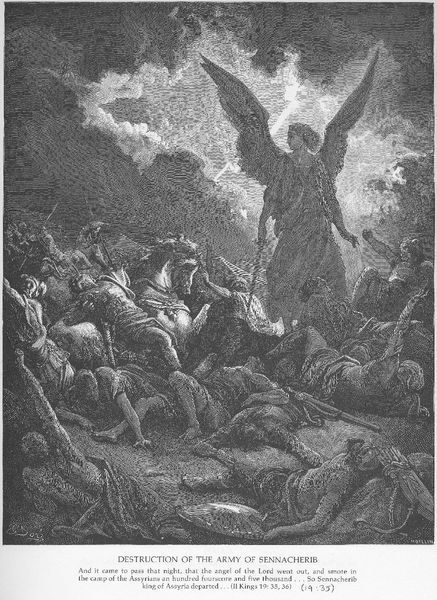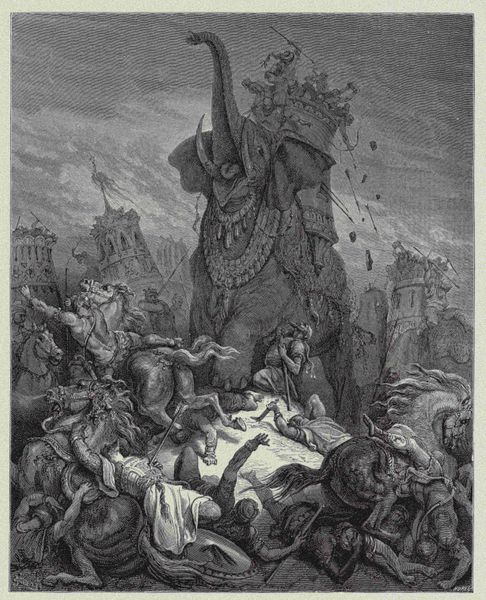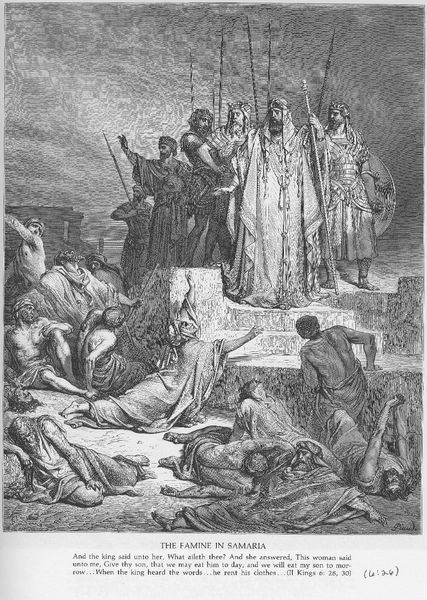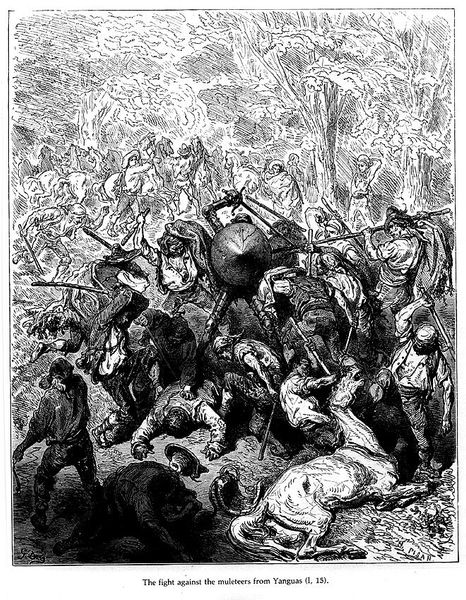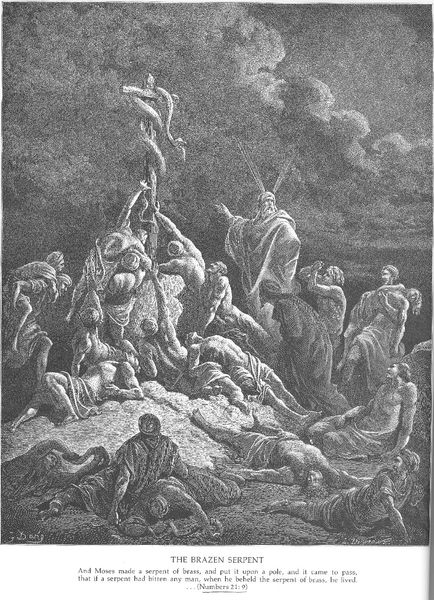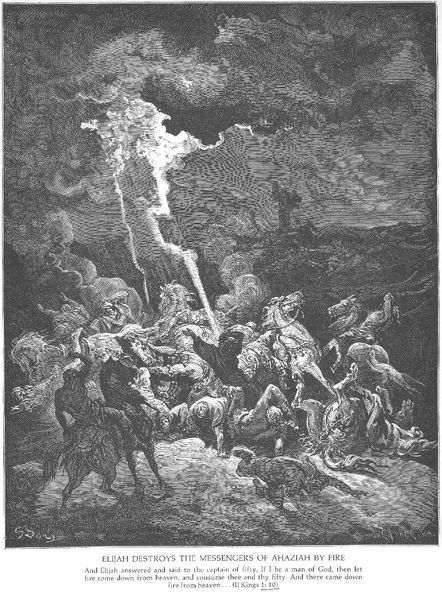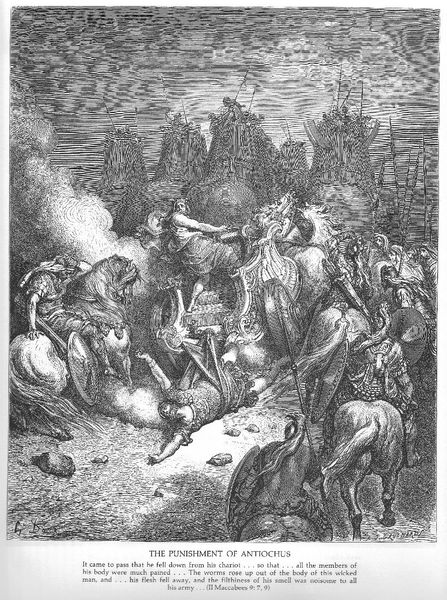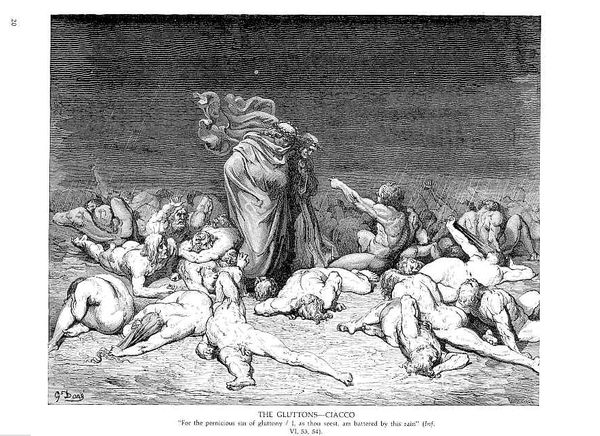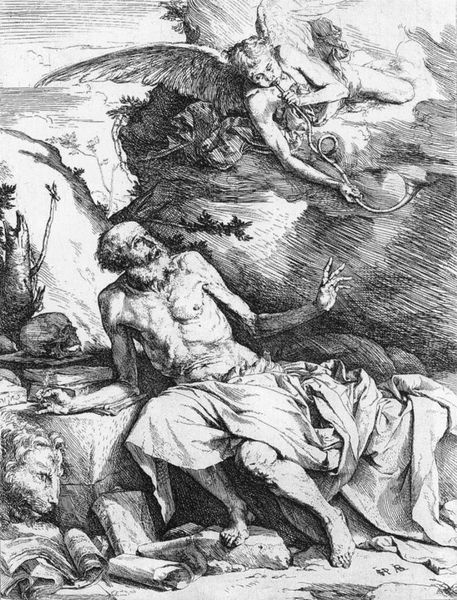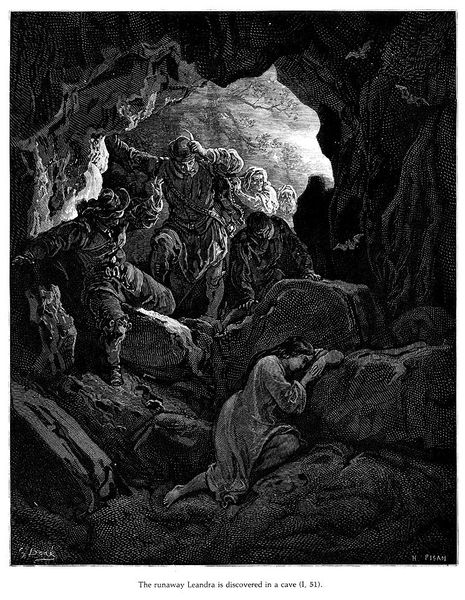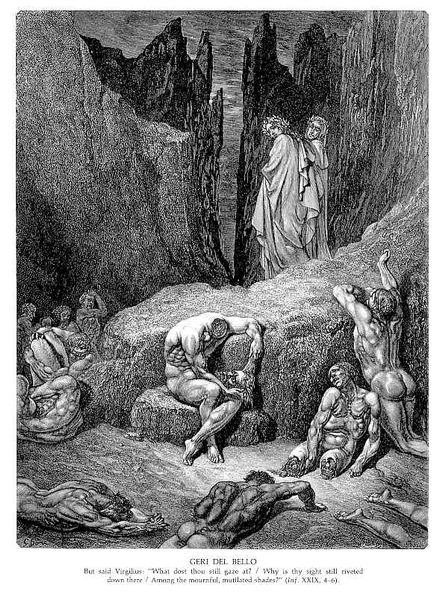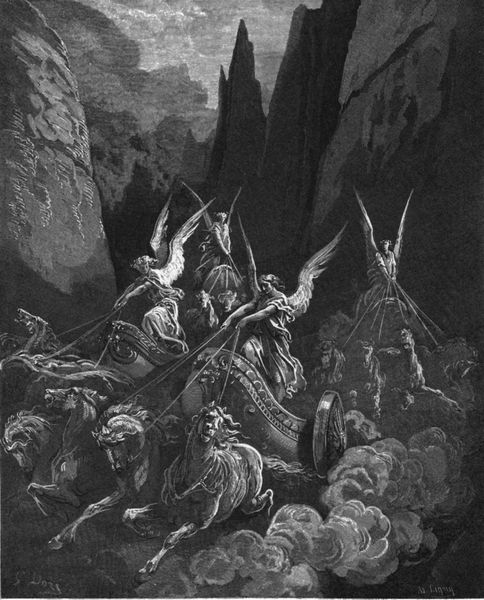
drawing, print, engraving
#
drawing
#
medieval
#
narrative-art
# print
#
death
#
old engraving style
#
figuration
#
romanticism
#
christianity
#
line
#
history-painting
#
engraving
#
christ
Copyright: Public domain
Curator: The work before us is “The Death of Eleazar,” a print by Gustave Doré. Look closely at the incredibly intricate line work. Editor: My first impression is overwhelming chaos. It's a visual storm of figures and textures. A somber event is captured by all the monochromatic palette. Curator: Doré was a master of historical and narrative scenes. This piece likely depicts a biblical event from the book of Maccabees. It's interesting how Doré used the print medium to democratize access to grand historical themes, challenging the traditional art market focused on painting for the elite. Editor: Absolutely. The sheer drama in this depiction of Eleazar’s demise is very arresting. It makes me consider the spectacle of death throughout art history and the often gendered, racialized, and political ways it is depicted. Whose deaths are considered worthy of immortalization, and what statements do such artistic choices make? Curator: The level of detail, typical of Doré's engravings, contributes to the dramatic intensity, yet this contrasts the reality that, for many, literacy levels prevented easy understanding. Thus the role of the church leaders, cultural context and popular understanding shaped its impact beyond solely its aesthetic appeal. Editor: Definitely, there is tension. The scene shows incredible violence, bodies scattered across the lower field that seems as though its rooted within conflict. It also provokes reflection upon which communities suffer most, in similar conditions. How did this narrative function as political rhetoric and for whom? Curator: Considering the print's role within religious or historical texts, its consumption was influenced by pre-existing belief systems. Doré, working within that specific socio-political time, could have shaped and reinforced specific narratives for the public in a strategic way. Editor: Looking closely, this is not a single, universally received image. But a site of cultural negotiations. For those disenfranchised by the religious institutions and other established socio-economic forces, Eleazar may take a different meaning. It becomes an intersection of identity, and class and politics, through time. Curator: Indeed. Thank you for highlighting those layers! It is remarkable how an engraving, seemingly rooted in a historical moment, speaks to contemporary concerns regarding who gets represented and why. Editor: Yes, and reflecting on the narrative behind its production reminds us that are artworks themselves historical objects and that their visual language and creation is not removed from political and social currents.
Comments
No comments
Be the first to comment and join the conversation on the ultimate creative platform.
